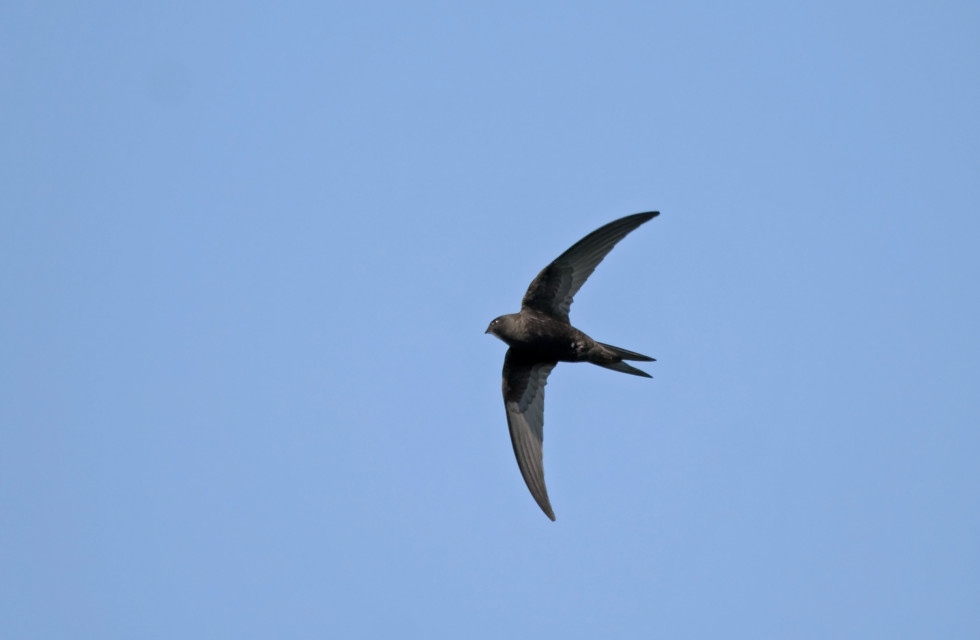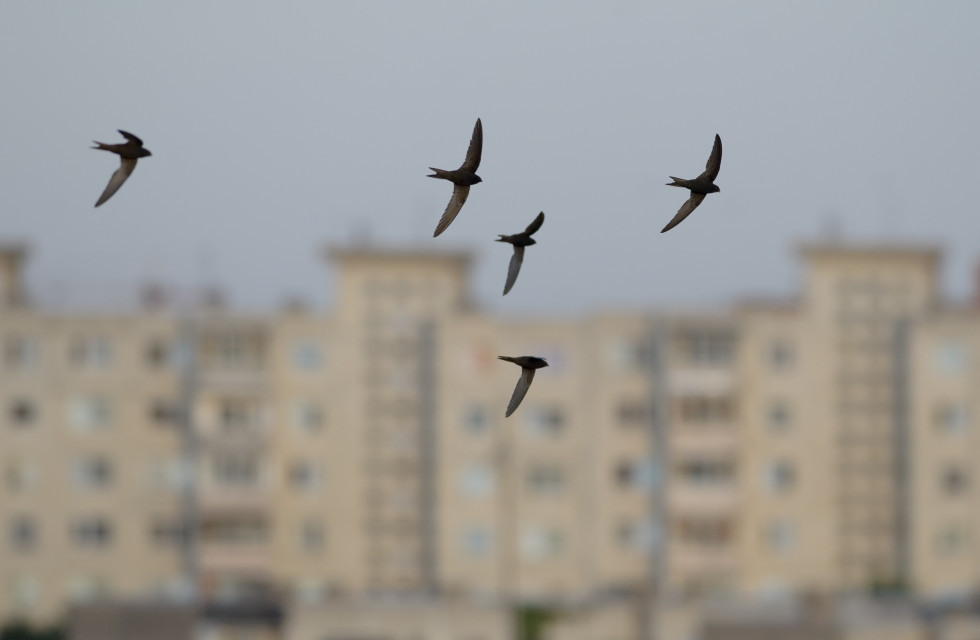I’m not much of a twitcher, but I like watching programmes like Springwatch and Autumnwatch and I absolutely love the seasonal aspect of birds in the UK, such as the friendly visits by the Christmas robin and the way that the different varieties of blue tits, long tail tits and others colonise my garden at differing stages throughout the seasons – generally arguing over who gets a go at the birdfeeder!
And at this time of year though, I’m particularly excited to see the return of the ‘Swifts of College Rise’ as they honour me with their 3-month breeding season.
I get a real buzz out of sitting on the patio, with a drink in my hand, staring up at the fantastic aerial display from mid-May to mid-August as the colony of migratory swifts race up and down our road ‘screaming’ and engaging in high-speed aeronautics.
This year though, they arrived at least a week early, which I'm delighted by but also concerned that man's effect on the planet is having an effect on nature.
Speed merchants
This summer visitor can be seen right across the UK, but are most numerous in the south and east, with the visit coinciding with the breeding period, before it heads back to winter in Africa.
If you are lucky enough to have swifts near you, you might see excited parties of them screaming and careering madly at top speed around your neighbourhood’s rooftops and houses, especially towards dusk.Click here to listen to a short YouTube of the sound they make.
Swifts are amongst the fastest birds on the planet, achieving speeds of 70mph+ as they dart around the sky chasing insects and air ‘plankton’.
They mainly feed at around 50-100m, but sometimes weather conditions force them down to lower levels and I often see this as a natural indicator of a change in the weather, so my visitors can also act as a weather wane as well as providing pure entertainment.
I hadn’t actually realised that they almost never land and even sleep on the wing, with half their brain snoozing whilst the other half keeps them flying! They also catch raindrops in the air to drink or have been known to fly low over water, skimming a mouthful from the surface.
With a long, distinctive boomerang-shaped wing span and a short, forked tail, swifts are really quite distinct from swallows and house martins that they can initially be mistaken for.
Here’s a list of reasons why I think swifts are simply fantastic:
-
Once they’ve left the nest, they will keep flying for almost their entire life and only stop flying if they are breeding
-
Swifts eat, mate and sleep in the air – with one half of their brain being able to go to sleep, whilst the other keeps them functioning
-
Swifts pair for life and meet up again in May at the same nest site, which means my street is the site of quite a few marital reunions!
-
Because they mate in the air, they occasionally arrive at the nest literally bursting with eggs
-
They are very sociable and breed in colonies, with both parents sharing nesting responsibilities
-
A swift will fly about 1.2 million miles during their life time and can fly an average of 500 miles in one day
-
They typically live for an average of 7 years, but the oldest British swift recorded was 18. Bird experts also think that some may live into their 20s or 30s
-
Our local Swift Group believes that some of the Maidenhead swifts migrate as far away as South Africa for winter
-
Swifts live in houses, churches and other high buildings and are able to squeeze through tiny gaps to nest inside roofs
This last point is important because renovation of older buildings often means the gaps and places that the swifts rely on are disappearing.
That’s why I’ve just decided to see if I can fit a couple of swift boxes to the top of my house so I can provide a home for these aerial superstars and ensure I can continue to enjoy them for years to come.
If you are lucky enough to have colonies anywhere in your vicinity, you might like to consider doing the same so you can build a colony near you, and then you too can sit back and watch the fantastic, 3-month, high-speed aerobatics at your leisure.
So, I’m not entirely sure whether they’ve arrived earlier this year because of climate change or a natural pattern, but whatever the reason, I hope they breed well whilst they are here and I look forward to sitting outside with my head backwards, eyes on the sky and a G&T in my hand!
Russell Jones is PR & Communications Manager for Mitsubishi Electric Living Environment Systems in the UK.
If you have any questions about this article or want to know more, please email us. We will contact the author and will get back to you as soon as we can.




